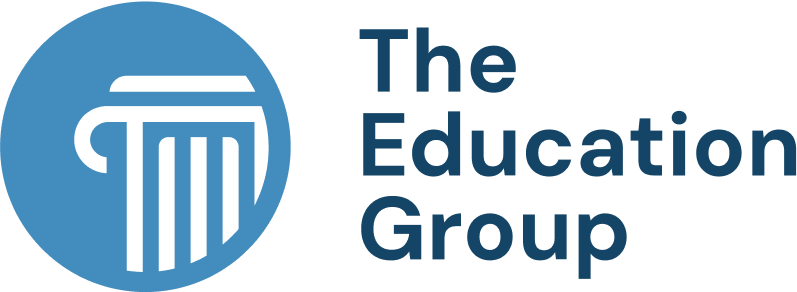The Board Chair’s Role in “Keeping your Head of School”
The Education Group Consultant, Andrew Wooden writes about the critical role of board chair succession planning in supporting long-term and successful Heads of School. Drawing on key articles and personal experience, the author argues that a strong, well-matched board chair is essential for a healthy headship and the overall stability of independent schools.
To those who think a long tenured headship is important: For many of us who were heads in 2002, Al Adams’ article “How to Keep Your Head: Great Schools and Long-Term Headship” (From Independent School, Fall 2002) was—and still is—a seminal thought piece on the value to a school community of a healthy long-term headship. More recently there has been such good and important writing on how to support a long-term head. Two articles I read and re-read on head support are “Supporting Heads: Sustaining a Flourishing Leadership Partnership” by Olaf Jorgenson and Tekawitha M. Permambuco-Wise (Independent School, Fall 2016) and a recent article also by Dr.Tekakwitha M. Pernambuco-Wise, “Finding Harmony. What Heads Want Their Board Chairs to Understand About the Head’s Role and their Own Role on the Board” (Independent School, Winter 2025). These three excellent articles demonstrate the important roles boards and more specifically board chairs play as they focus on some of their most important responsibilities: “Identifying, recruiting, hiring, supporting [emphasis added], and evaluating” the head of school. After much reflection and conversations with heads of school and my colleagues at The Education Group (TEG) where I am a consultant, I want to make a case for the critical importance of a well-thought-out and executed plan for board chair succession. From my point of view as a former HOS and a current independent school trustee, I believe that appointing the right board chair is often most important for the Head of School. Often if the chemistry is not right, the head/chair relationship falters and the school may find itself in an unnecessary head search.
What has been our experience with board chair succession in HOS searches? One of the first questions we ask when interviewing board chairs who are beginning a head search is, “What is your term as board chair, and who will succeed you?” We are relieved when a school’s board chair is strong and still has time in their term and they have identified the chair’s successor. The heir apparent to the chair will often become the search chair and that gives confidence to the head of school finalists that they know their future partners. Conversely,we often find that the school has not developed the best “bench strength” that will prepare trustees for the top levels of board leadership. This makes appointing the best HOS candidates more challenging. Even when head candidates are willing to take the leap without knowing their future board chairs, the uncertainty can be difficult to manage and if the next chair is not a good compliment for the head, the conditions are not ideal for the long-term tenure of the head and the stability of the school.
How might a Board Chair be thoughtful when discussing succession with a Committee on Trustees (COT): The board chair should be charged to describe to the COT chair the importance of identifying the best future candidates for board leadership. As the COT is discerning future candidates for the board, a good filter is, “Can we imagine this potential trustee as our future board chair?” If the board and COT have done an excellent job recruiting non-profit leaders who could be fast tracked on to the Executive Committee (Exec) they have succeeded in building the “bench strength” that will allow several strong candidates ready to be board chair well before they “term out.” Of course, the COT presents the slate of officers (including the board chair) and only the board can approve these appointments, but the board chair and the chair of the COT are wise to discern among the most able leaders on the Exec to be the best partner for the head of school. The best head/board chair relationship is more like doubles partners in tennis; they know their roles, they are equals in many ways, and communicate and work together seamlessly.
What is the role of the head of school in identifying potential trustee leadership? As stated above, the COT presents the slate and the board of trustees votes to approve after discussion. But a wise board chair and chair of COT seeks names of potential candidates from a variety of sources, and often the HOS is an excellent source of names of potential future board leaders. And, when a HOS and Chair have a close and trusting relationship, the HOS can suggest which trustee leaders appear to be good at collaboration. In this trusting partnership between HOS and Board Chair, the HOS can be a helpful sounding board in the Chair’s discernment process for healthy chair succession. Although the HOS should not be able to choose their Board Chairs, the COT must ensure that they propose candidates for chair succession who will have the right chemistry for their school head.
“First Things First” In closing, we are emphasizing the critical importance of getting board chair succession right; thoughtful board succession planning is the necessary condition for the best support for the Head of School. We are suggesting that to do so, boards must make a priority of identifying potential new board members who have the skills, experience, and talent to make good board chairs in the near future. Each new class of trustees must include several impressive candidates who are likely to quickly emerge as board leaders; this to us is critical. As Wendell Barry famously wrote, “A proper education…means knowing what things are more important than other things; it means putting first things first.” First, appoint trustees who have the potential to be strong, collaborative board chairs.
